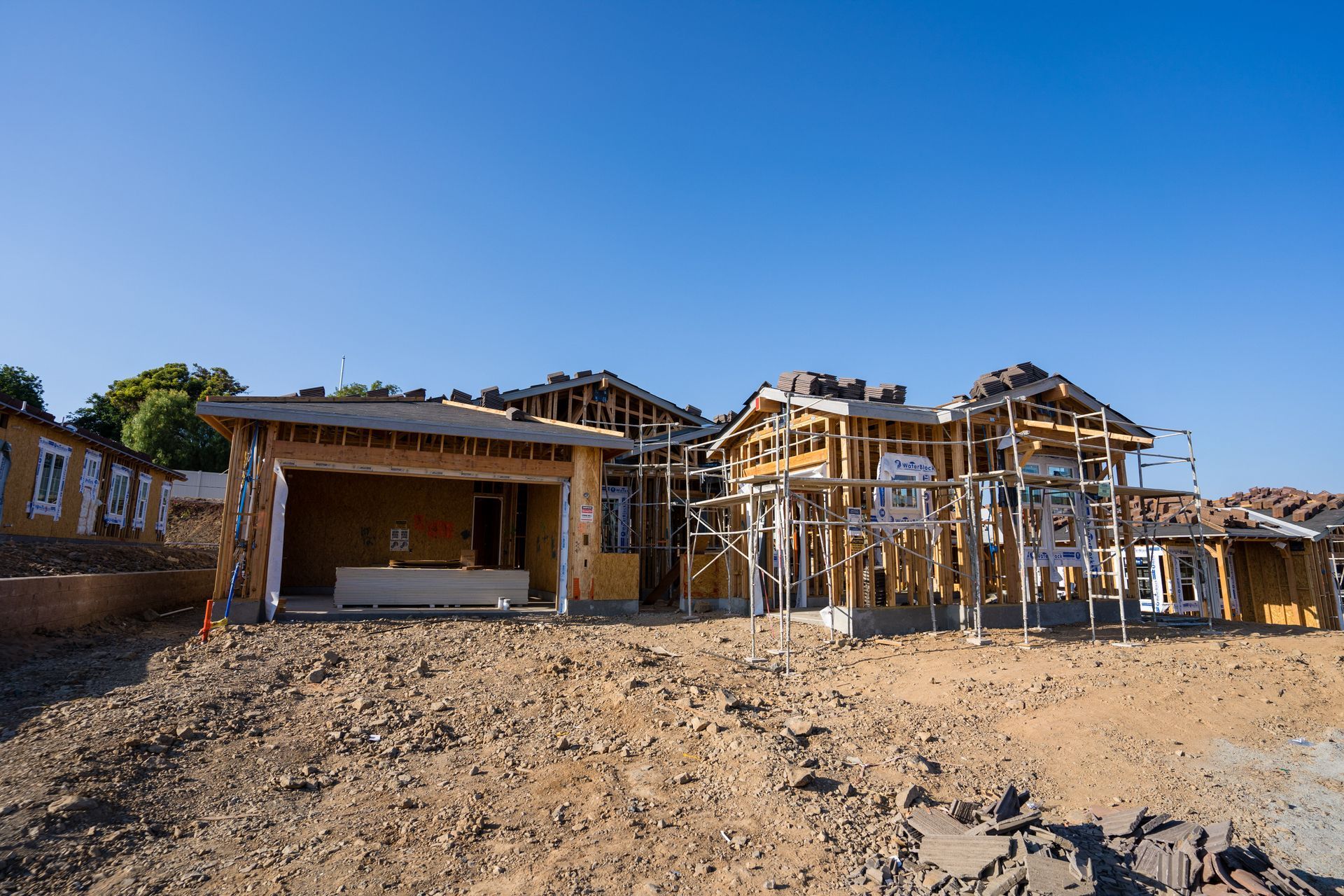TIPS ON SELECTING HOMEOWNERS INSURANCE PROVIDER IN SACRAMENTO

Homeownership is a significant milestone and a substantial investment that comes with its own set of responsibilities. Among these is securing the right homeowners insurance, which is essential to protecting your property and belongings against unexpected events like natural disasters, theft, or accidents.
When selecting a homeowners insurance provider, it's crucial to consider several factors to ensure that you choose a policy that not only fits your budget but also provides comprehensive coverage. This is especially true in Sacramento, where unique regional factors, such as the risk of wildfires and floods, may influence the type of coverage you need.
In this comprehensive guide, we'll delve into everything you need to know about selecting a homeowners insurance provider in Sacramento. From understanding the basics of homeowners insurance to evaluating providers and policies, this guide will equip you with the knowledge to make an informed decision that protects your investment and gives you peace of mind.
Understanding Homeowners Insurance Basics
Before you begin comparing insurance providers, it's essential to understand the basics of homeowners insurance. Knowing what a standard policy typically covers—and what it doesn't—will help you make more informed decisions when evaluating your options.
What Homeowners Insurance Covers
A standard homeowners insurance policy typically includes several types of coverage:
- Dwelling Coverage: This covers the structure of your home, including the roof, walls, floors, and built-in appliances, against damage from perils like fire, windstorms, hail, and more. In Sacramento, it's important to ensure that your policy includes coverage for regional risks like wildfires.
- Personal Property Coverage: This covers your personal belongings, such as furniture, electronics, and clothing, against damage or theft. Most policies cover personal property up to a percentage of your dwelling coverage, typically around 50-70%.
- Liability Coverage: This protects you in case someone is injured on your property or if you accidentally damage someone else's property. Liability coverage can help pay for legal fees, medical bills, and other expenses resulting from a lawsuit.
- Additional Living Expenses (ALE): If your home is damaged and uninhabitable, ALE coverage helps pay for temporary housing and other living expenses while your home is being repaired or rebuilt.
- Other Structures Coverage: This covers structures on your property that are not attached to your home, such as a detached garage, shed, or fence.
What Homeowners Insurance Doesn't Cover
While homeowners insurance provides broad protection, there are some things that a standard policy typically does not cover:
- Flood Damage: Standard homeowners insurance policies do not cover flood damage. If your home is located in a flood-prone area in Sacramento, you may need to purchase a separate flood insurance policy through the National Flood Insurance Program (NFIP) or a private insurer.
- Earthquake Damage: Earthquake coverage is also not included in standard policies and must be purchased separately. Given that California is prone to seismic activity, it's worth considering earthquake insurance.
- Maintenance Issues: Damage resulting from neglect, such as mold, termite infestations, or wear and tear, is generally not covered. Homeowners are responsible for regular maintenance to prevent these issues.
- High-Value Items: Standard policies have limits on coverage for high-value items like jewelry, art, or collectibles. You may need to purchase additional coverage, known as a rider or endorsement, to fully protect these items.
Factors to Consider When Choosing a Homeowners Insurance Provider
Choosing the right homeowners insurance provider involves more than just comparing prices. You'll want to consider several factors to ensure you're getting the best value and protection for your home. Below are some key considerations:
1. Financial Stability of the Insurance Company
One of the most critical factors to consider is the financial stability of the insurance company. You want to choose a provider that has the financial strength to pay out claims, especially in the event of a large-scale disaster that affects many homeowners simultaneously.
You can check the financial stability of an insurance company by reviewing ratings from independent agencies such as A.M. Best, Moody's, or Standard & Poor's. These agencies assess the financial health of insurance companies and assign ratings based on their ability to meet policyholder obligations.
2. Coverage Options and Customization
Different insurance providers offer varying levels of coverage, so it's essential to review the specific policy details and ensure they meet your needs. Look for a provider that offers customizable options, allowing you to add or adjust coverage based on your unique situation.
For example, if you own high-value items, you may want to add a rider for additional coverage. Similarly, if you live in a high-risk area for wildfires or floods, you may want to explore options for supplemental coverage to protect against these specific risks.
3. Claims Process and Customer Service
The quality of an insurance provider's customer service can make a significant difference in your overall experience, especially when filing a claim. Research the company's claims process—how easy is it to file a claim, and how quickly do they respond? Are claims processed efficiently and fairly?
Reading customer reviews and ratings can provide insight into the provider's reputation for customer service. Additionally, consider contacting the company's customer service department directly to ask questions and gauge their responsiveness and helpfulness.
4. Discounts and Cost-Saving Opportunities
Homeowners insurance can be expensive, so it's worth exploring any discounts or cost-saving opportunities offered by the provider. Common discounts include:
- Bundling Discounts: Many insurance companies offer discounts if you bundle your homeowners insurance with other policies, such as auto or life insurance.
- Safety Features: You may qualify for discounts if your home has safety features like a security system, smoke detectors, or fire sprinklers.
- Claims-Free Discount: Some providers offer discounts to policyholders who have not filed any claims over a specific period.
- New Home Discount: If your home is newly built or recently renovated, you may be eligible for a discount.
Be sure to ask about all available discounts when getting a quote from an insurance provider.
5. Reputation and Reviews
An insurance provider's reputation within the industry and among customers is an important factor to consider. While no company is perfect, consistent patterns of positive or negative feedback can be telling.
Check online reviews and testimonials on websites like Yelp, Google Reviews, and the Better Business Bureau (BBB). Look for patterns in customer feedback related to claims handling, customer service, and overall satisfaction.
6. Local Expertise and Understanding of Sacramento's Risks
Choosing a provider with local expertise can be a significant advantage, especially in a region like Sacramento, where specific risks such as wildfires and floods are more prevalent. A provider familiar with the local landscape will be better equipped to recommend appropriate coverage options tailored to Sacramento's unique challenges.
Working with a local insurance agent or provider can also provide you with more personalized service and better insight into the nuances of the Sacramento market.
7. Ease of Communication and Accessibility
In today's digital age, ease of communication is crucial. Whether you prefer to handle your insurance matters online, through a mobile app, or in person, ensure that the provider offers the communication channels that best suit your needs.
Check if the company has a user-friendly website, mobile app, or customer portal where you can easily manage your policy, file claims, and get in touch with customer service. Accessibility is key, especially in emergencies when you need quick assistance.
Steps to Choosing the Right Homeowners Insurance Provider
Now that you know what to look for in a homeowners insurance provider, here are the steps to help you make the right choice:
Step 1: Assess Your Insurance Needs
Start by assessing your insurance needs based on the value of your home, its contents, and any specific risks you face. Consider factors like:
- The estimated cost to rebuild your home (replacement cost)
- The value of your personal belongings
- Liability coverage needs
- Additional coverage for specific risks (e.g., floods, earthquakes)
Step 2: Research and Compare Providers
Research multiple insurance providers and compare their offerings. Obtain quotes from at least three different companies to compare coverage options, discounts, and premiums. Be sure to compare apples to apples by ensuring that each quote includes similar coverage levels and deductibles.
Step 3: Check Financial Ratings and Customer Reviews
As mentioned earlier, review the financial stability ratings of each provider from agencies like A.M. Best and read customer reviews to gauge their reputation. Pay attention to how they handle claims and customer service interactions.
Step 4: Ask for Recommendations
Consider asking friends, family, or your realtor for recommendations on homeowners insurance providers. Personal referrals can provide valuable insights and help you find a provider with a proven track record.
Step 5: Contact the Providers
Reach out to the insurance providers directly to ask questions, get more details about their coverage options, and clarify any concerns. This step will also give you an opportunity to evaluate their customer service and responsiveness.
Step 6: Review the Policy Details
Once you've narrowed down your options, review the policy details carefully. Make sure you understand what is covered, the limits of coverage, and any exclusions. Pay close attention to the deductible amounts and how claims will be handled.
Step 7: Make Your Decision
After considering all factors, choose the homeowners insurance provider that best meets your needs and offers the best value. Be sure to keep your policy documents in a safe place and review your coverage annually to ensure it continues to meet your needs.
Common Mistakes to Avoid When Choosing a Homeowners Insurance Provider
Selecting homeowners insurance is a significant decision, and it's essential to avoid common pitfalls that can lead to inadequate coverage or unexpected costs. Here are some mistakes to watch out for:
1. Focusing Solely on Price
While cost is an important factor, choosing the cheapest policy without considering the coverage details can be a costly mistake. A lower premium may come with higher deductibles, limited coverage, or exclusions that leave you vulnerable.
2. Underestimating the Value of Your Home and Belongings
Failing to accurately estimate the replacement cost of your home and the value of your belongings can result in insufficient coverage. Make sure your policy provides enough coverage to fully rebuild your home and replace your possessions in case of a total loss.
3. Ignoring Regional Risks
Sacramento has specific regional risks, such as wildfires and floods, that should be considered when selecting coverage. Don't assume that a standard policy will cover all potential hazards—be sure to add supplemental coverage if needed.
4. Overlooking Policy Exclusions
Every insurance policy has exclusions—specific events or types of damage that are not covered. Carefully review these exclusions to ensure you're not caught off guard by uncovered losses.
5. Failing to Reassess Your Coverage Needs Over Time
As your home and circumstances change, so too should your insurance coverage. Failing to reassess your coverage needs regularly can leave you underinsured or paying for coverage you no longer need.
Conclusion: Protecting Your Home and Investment in Sacramento
Choosing the right homeowners insurance provider is a critical step in protecting your most significant investment—your home. By understanding the basics of homeowners insurance, considering key factors when evaluating providers, and avoiding common mistakes, you can select a policy that offers the coverage and peace of mind you need.
Whether you're a first-time homebuyer or a seasoned homeowner, taking the time to research and compare insurance providers will pay off in the long run. Remember, working with a knowledgeable local realtor and insurance agent in Sacramento can further enhance your decision-making process, ensuring that you choose a policy that is tailored to your specific needs and regional risks.
In the end, your home is not just a place—it's your sanctuary, your investment, and your future. Protect it wisely with the right homeowners insurance.
If you're looking to learn more about buying, selling, relocating or get the best real estate experience in the Sacramento area, get in touch with CJ Domondon. His team can provide valuable insights and guidance to help you navigate the market. You can contact CJ Domondon directly to schedule a consultation or discuss your real estate needs.
Keywords for SEO: Sacramento, best realtor in Sacramento, sell my house, first time buyer, Sacramento real estate market, homeowners, insurance in Sacramento, Sacramento real estate, insurance provider selection, home buying tips Sacramento, Sacramento housing market, local insurance agent Sacramento








